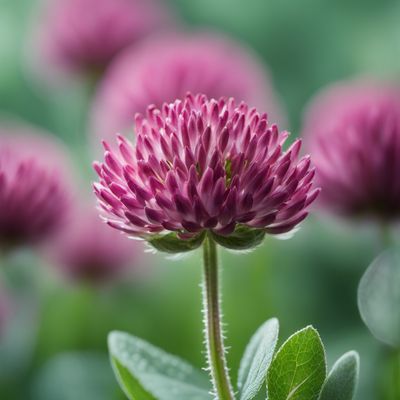
Ingredient
Chiretta infusion leaves
The Bitter Elixir: Unveiling the Power of Chiretta Infusion Leaves
Chiretta infusion leaves are characterized by their small, lance-shaped leaves with serrated edges. They have a vibrant green color and a distinct bitter taste. The leaves are delicate and have a slightly rough texture. When brewed into an infusion, they release a strong, earthy aroma. Chiretta infusion leaves are commonly used in herbal teas, tonics, and tinctures due to their numerous health benefits.
Origins and history
Chiretta infusion leaves have a rich history in traditional medicine, particularly in Ayurveda and Chinese herbal medicine. Native to South Asia, these leaves have been used for centuries to treat various ailments, including digestive disorders, fever, and respiratory infections. They are highly regarded for their antiviral, anti-inflammatory, and immune-boosting properties.
Nutritional information
Chiretta infusion leaves are a good source of antioxidants, flavonoids, and terpenoids. They are low in calories and contain essential minerals such as calcium, iron, and potassium.
Allergens
There are no known allergens associated with chiretta infusion leaves.
How to select
When selecting chiretta infusion leaves, look for fresh, vibrant green leaves without any signs of wilting or discoloration. Opt for leaves that have a strong, bitter aroma, as this indicates their potency.
Storage recommendations
To maintain the freshness and quality of chiretta infusion leaves, store them in an airtight container in a cool, dry place away from direct sunlight. Alternatively, they can be refrigerated for extended shelf life.
How to produce
Chiretta infusion leaves can be grown in a home garden by planting Andrographis paniculata seeds in well-drained soil and providing adequate sunlight and water. However, it is recommended to consult a local horticulturist or herbalist for specific cultivation instructions.
Preparation tips
To prepare a chiretta infusion, steep a handful of leaves in hot water for 5-10 minutes. Strain the liquid and sweeten with honey or a natural sweetener if desired. Chiretta infusion can be consumed as a standalone herbal tea or incorporated into other beverages or herbal remedies. It is important to note that the bitterness of chiretta infusion leaves may require some adjustment to suit personal taste preferences.
Culinary uses
Chiretta infusion leaves are primarily used in herbal teas, tonics, and tinctures due to their bitter taste and medicinal properties. They are also occasionally used as a flavoring agent in certain traditional dishes and beverages.
Availability
Chiretta infusion leaves are commonly available in South Asian countries such as India, Sri Lanka, and Nepal. They can also be found in specialty herbal stores or online.
More ingredients from this category » Browse all

Moldavian dragonhead infusion leaves
The Aromatic Elixir: Moldavian Dragonhead Infusion Leaves

Norway spruce infusion leaves
The Forest's Elixir

Alfalfa infusion leaves
The Green Powerhouse: Alfalfa Infusion Leaves

Clubmoss infusion leaves
The Ancient Elixir: Unveiling the Mysteries of Clubmoss Infusion Leaves

Cowberry infusion leaves
The Nordic Elixir: Cowberry Infusion Leaves

Raspberry (red and yellow) infusion leaves
The Fragrant Tea Leaves

Mulberry (black and white) infusion leaves
The Versatile Mulberry

Mistletoe infusion leaves
The Magical Elixir: Mistletoe Infusion Leaves

Common speedwell infusion leaves
The Healing Power of Common Speedwell

Mallow infusion leaves
The Soothing Herb: Mallow Infusion Leaves

Red clover infusion leaves
The Floral Elixir: Discovering the Delicate Flavor of Red Clover

Meadowsweet infusion leaves
The Nature's Elixir